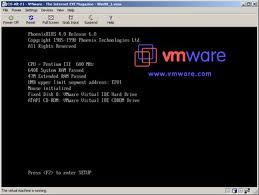At the start let me quiet your fears, I'm not going to bash
virtualization or the cloud, they're great options. I'd even go so far as to say they're fast
becoming the de facto standard for dealing with your data.
First a little history because contrary to
popular belief virtualization was not present at the Big Bang.
When virtualization was in its infancy the promise was great
but the future not so certain. There was
more chance of your office PC running a Linux distro than I.T. trusting their
infrastructure to a server that didn't have a physical off button. Virtualization was immature and more often
than not when something bad happened there was little chance of recovery. Worse, compatibility problems with operating
systems left many deployments relegated to a corner running a few instances of
UBUNTU. I.T. was still suffering from
the implosion of the tech bubble and didn't need another reason to worry about
their jobs.
Sometime around 2007 virtualization became acceptable. Corporate bean counters liked the idea of
doing more with less. Hardware and
storage costs were falling and Virtualization gained credibility when large
companies coming up on hardware refresh cycles decided to make the move.
VMware, Microsoft and Citrix responded with their own
offerings promising ease of administration, lower energy costs and better use of hardware. It wasn't uncommon, for example, for the
average windows server to only be using 40% of its capacity at any time. Virtualization promised to fix that.
 How times have changed.
Now you're hard pressed to find server hardware dedicated to something
other than virtualization in any organization of size. Gone are the days of hovering around the
lobby waiting for your RAID controller to show up so you can get your new
Exchange server up and running. Now, a
few clicks, an ISO image and you can have a new server online in minutes.
How times have changed.
Now you're hard pressed to find server hardware dedicated to something
other than virtualization in any organization of size. Gone are the days of hovering around the
lobby waiting for your RAID controller to show up so you can get your new
Exchange server up and running. Now, a
few clicks, an ISO image and you can have a new server online in minutes.
Unfortunately, virtualization is a victim of its own success. The bean counters have become addicted to the
whole concept of more with less resulting in more downward pressure on I.T. budgets.
As a result, more often than not when I run into an
organization heavily dependent on virtualization the hardware is at least 5
years old and probably repurposed from something else. I recently walked into a multimillion dollar
company, for example, that was relying
on second hand hardware sourced from EBay to run their virtual server farm!
I'm all for recycling but no server is immortal regardless
of the operating system it's running and after awhile hardware will start to
fail. With the rapid pace of Moore's law
it's not uncommon to find parts availability for servers relegated to the
secondary market within 2 years. Server hardware still tends to be proprietary
and unlike your home computer isn't available at Newegg. If it's obsolete you roll the dice and hope
that hot deal on EBay isn't for something worse than what you already have.
The promise of cheap or free frequently guts reason, however,
forcing I.T. departments into less than best practices.
Continued in Part 2
Continued in Part 2

No comments:
Post a Comment